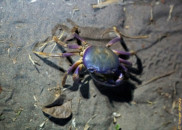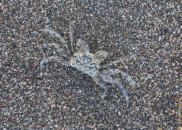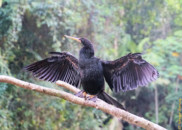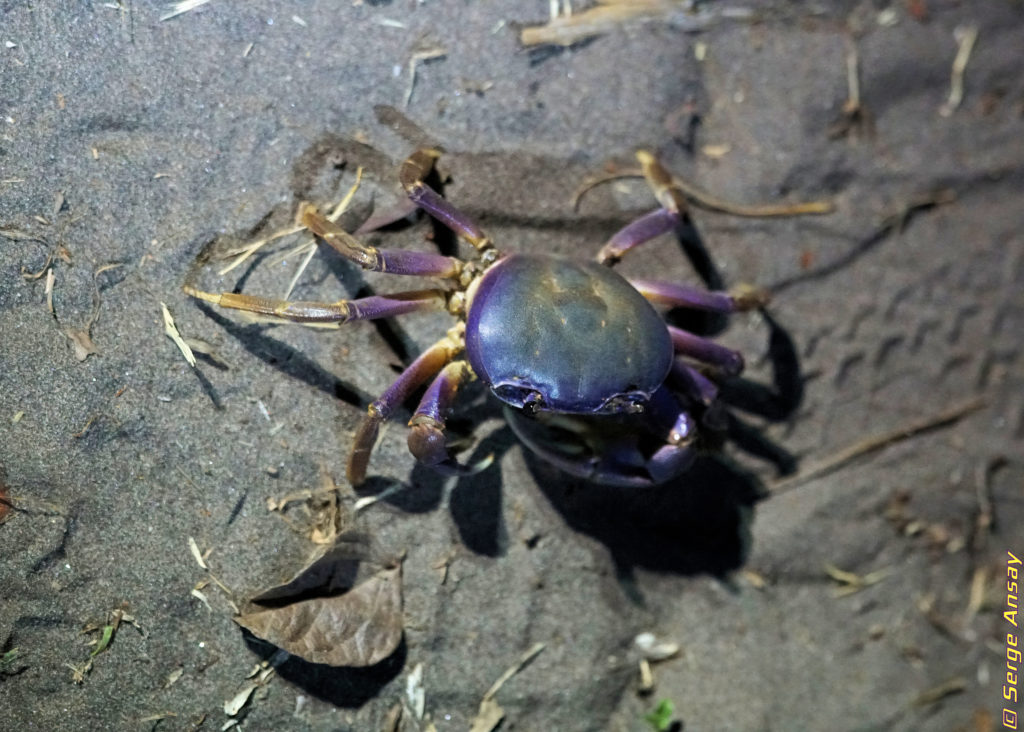This is going to be the last post about Costa Rica’s wildlife.
Although I do have a few more pictures which one might find interesting, they were all taken in the La Paz Waterfall Garden, the same place where the first Costa Rica post pics were taken. These pictures show a few felines and some monkeys, some of them in interesting postures. But I think it’s best to keep the focus of this blog to wildlife in its natural setting. Don’t hesitate to let me know if you disagree.



First, we have a couple of crabs.
The blue land crab is quite common in the area, being found all the way down the Atlantic ocean coastline from Florida to Brazil. Here are a few interesting facts I just found out about this animal:
1. This is a nocturnal species, which lives in deep burrows which they dig in mangroves and wet forests.
2. They all come out during the day for mating only for a few days once a year to mate.
3. They can live up to 11 years.
4. They are found sometimes far on land up to 5 miles
5. They are mostly vegetarians, eating leaves, berries, fruit, etc. They will eat insects on occasion.
6. Females are less colorful than males. This leads me to think that I caught a male this time.
It took me an hour to identify the second crab. That is because the ghost crab can be completely different than the one in my pic. Where this one has a sand-like coloration, I found that most pics show them with red and orange colors. So, I had to looked at a lot of pictures to be sure.
This crab has tall periscope-like eyes which gives it a 360 degrees field of vision. Contrarily to what I assumed when I saw the name associated with a picture looking a little like the one in my pic, it is not for its camouflage that it was named “ghost crab” but rather because it is fast and able to disappear in a blink of an eye. It can run at a speed up to 16 kilometers/hour (10 mph).
The next animal is a bird called Anhinga. For a while I thought it was a cormorant, because of the posture it is holding in this picture. But reading the wikipedia article I found out that it is actually a common mistake. And, indeed, for me it was the bill that made me realize this can’t be a cormorant since their bill has a hook where this one is straight.
Then, we have a strawberry poison-dart frog. Although the picture in wikipedia shows a specimen with red legs, the one I caught has blue legs. So it is commonly referred to as a blue-jeans poison-dart frog and its color pattern is said to be due to breeding in captivity. But this one was in the wilderness, so, I am guessing they released some in the restored forest preserve we were visiting. This article has an interesting description of what makes this frog poisonous. But the take out is that, “whatever predator eats this frog will experience convulsions, paralysis, and death”. I can imagine that the predators will have learned to leave these little guys alone.
The butterfly is often mislabeled as a glasswing butterfly. After spending another hour I finally discovered that the real name is as beautiful as its owner: blushing phantom 😀
Wikipedia had almost nothing about this butterfly except the link I added which will take you to a site dedicated to butterflies. Their page about this particular butterfly contains more information than anywhere else on the web.
The furry animal is a white-nosed coati. If you have been following my blog you may remember a video I shared in the post about a raccoon as I discovered that they are both members of the same family, the procyonidae.




Thanks for sharing, Serge. The Ghost Carb and strawberry frog are really something to see through your pictures.
Thank you Michael. Glad you liked them.